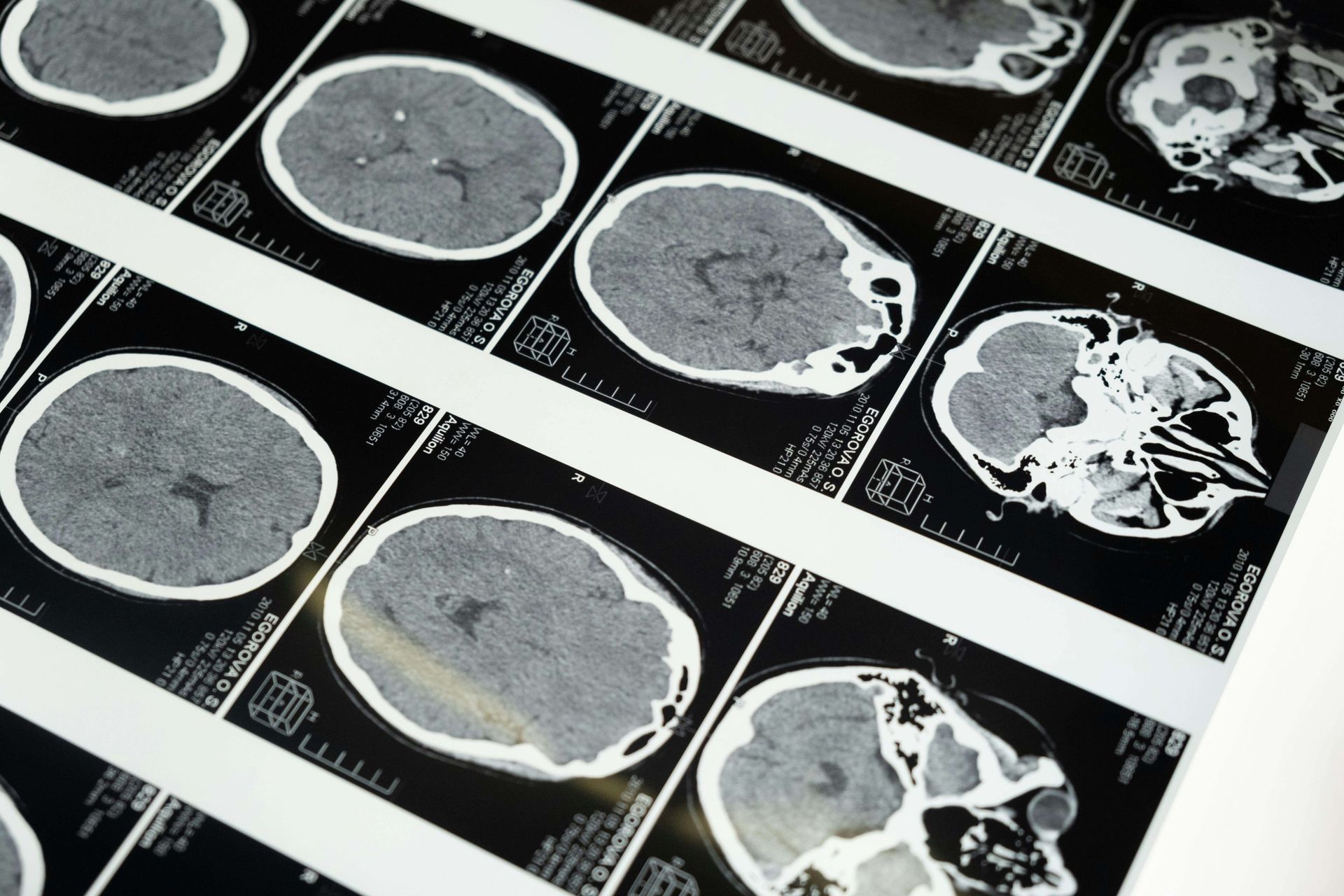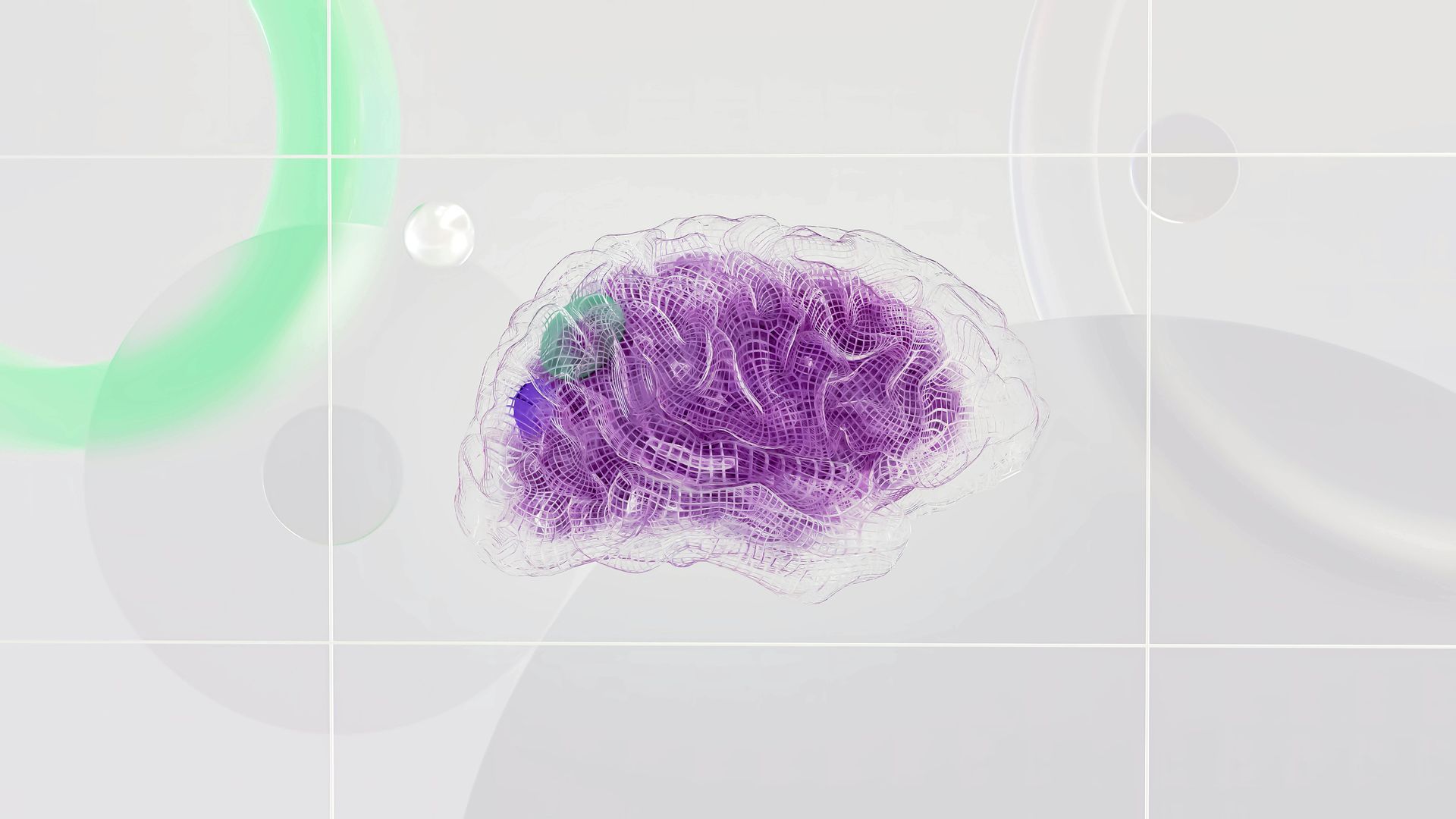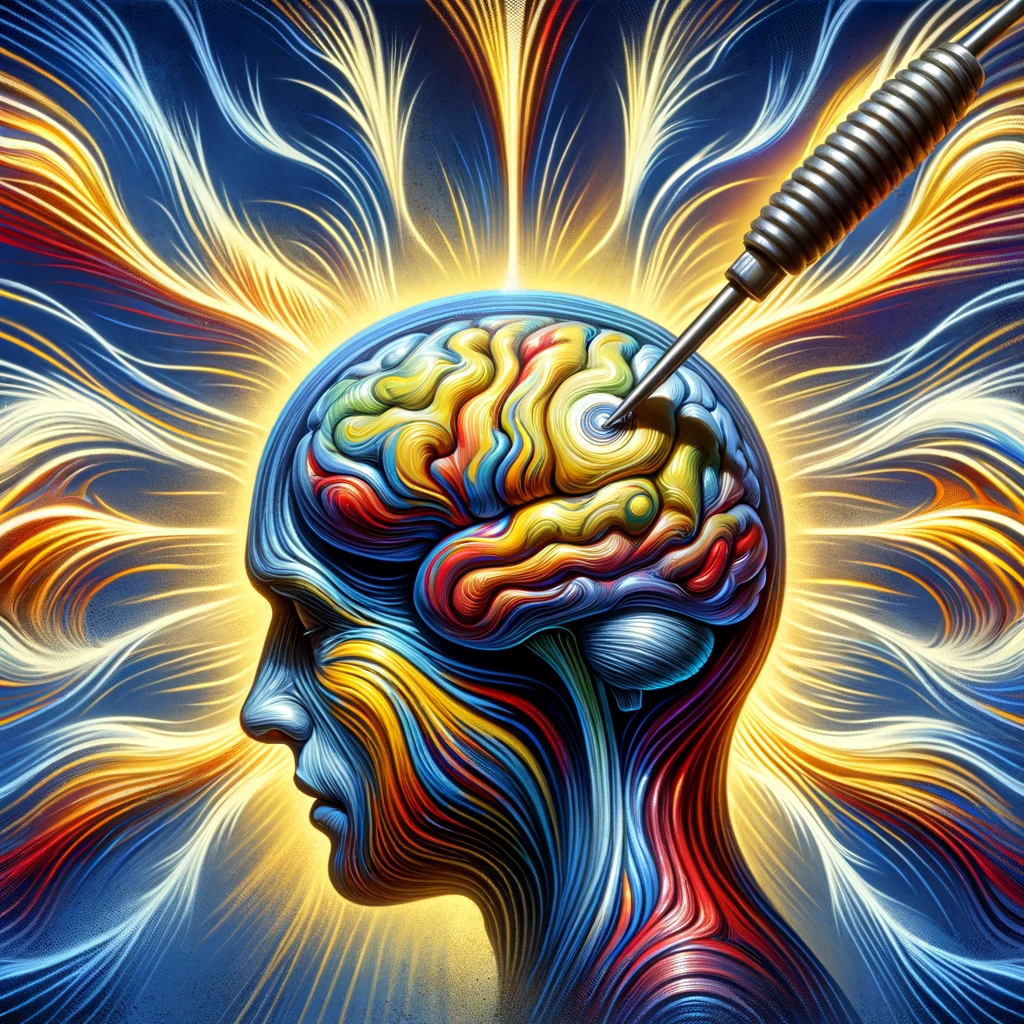Exploring the Efficacy of rTMS in Migraine Management: A Review
Understanding Migraine: A Global Health Burden
Migraine is a neurovascular disorder that is said to affect more than 1 billion people across the world. It can be an extremely debilitating condition with significant impairments of health, daily living, and quality of life. According to the global burden of disease study, migraine is in the top 10 causes of years lived with disability, in the general population and the second cause of disability in both males and females younger than 50 years. The World Health Organisation (WHO) currently reports that migraine affects 15 to 20% of the population and is three times more prevalent in women than in men in the United States and Europe. Medication treatments are often effective in the treatment of migraine, but there are large individual differences, and many medications do come with a significant side-effect burden. Also, there can be significant issues following medication cessation. For example, headache may worsen following suspension of anti-CGRP monoclonal antibody therapy.
rTMS: A Potential Migraine Treatment
rTMS has been used, at least in trial work, for many years now as a treatment for migraine. In the UK, NICE (National Institute for Health and Care Excellence) issued a so-called Interventional Procedures Guidance back in 2014. They concluded that while the procedure appeared safe, there was a lack of information concerning long-term effects, and while there was some positive research concerning efficacy, they could not approve use within the NHS on the then available evidence.
NICE's Stance on rTMS for Migraine Treatment
In their recommendations, they highlight the difficulty when trying to interpret migraine research as TMS has been evaluated in a number of settings e.g. : (1) for use during the aura before a migraine episode or (2) at the start of migraine episode or (3) with the intention of stopping or reducing the severity of an episode or (4) at planned intervals with the intention of reducing the frequency or severity of migraine episodes. So, TMS might be used as a treatment or for prevention.
The Mechanisms Behind rTMS in Migraine Relief
The mechanism behind rTMS potentially helping in migraine patients is discussed in a paper by Zhong et al. in 2022 “Non-invasive brain stimulation (NiBS) technology has been regarded as an important innovation in neuropsychiatric diseases and chronic pain (including migraine) in recent years and is widely used in clinical settings. Transcranial magnetic stimulation, which applies a magnetic field to the surface of the scalp, and induces current in this subjacent cortex is an effective and safe approach that has been approved by the FDA for migraine treatment. As a NiBS method, TMS can excite or de-polarise neurones by fast alternating magnetic field, and electrical changes in the brain are believed to regulate neurotransmitters in the brain. TMS may reduce pain by modulating the excitability level, as patients with migraine tend to show hyper excitability of the neurones.” And “Chronic migraine patients may also suffer a higher level of central excitability. So the long lasting effect of rTMS could be appropriate for chronic migraine sufferers”. (Note that the FDA approved treatment referred to, is actually not rTMS, but use of a single pulse TMS machine).
Comparative Studies: rTMS vs. Other Non-Invasive Brain Stimulations
Further complicating matters, when looking at the impact of non-invasive brain stimulation (NiBS) is that different types of stimulation have been tried (e.g. repetitive or single pulse TMS) to treat migraine, while different coil types are used and different brain regions stimulated. As well as rTMS, transcranial direct current stimulation (tDCS) has also been trialled. One recent paper out of Iran “The efficacy of repetitive transcranial magnetic stimulation (rTMS) versus transcranial direct current stimulation (tDCS) on migraine headaches: a randomised clinical trial” by Naji et al in Advanced Biomedical Research (2024) highlights this. Here, they studied 72 patients with migraine headaches. The TMS patients received stimulation over the left dorsolateral prefrontal cortex (DLPFC). They refer to significant improvements in both groups for anxiety, with rTMS also showing significant improvement in depression. The report, however, concluded that there was no improvements in pain intensity or the impact of headaches of daily life. The issue here, is that targeting the DLPFC is the standard practice for the treatment of depression, craving and other such disorders. Evidence is emerging, however, that for rTMS to have a positive impact on migraine, it may be necessary to not just target one specific brain area (e.g. the DLPFC) but rather a number of brain areas.
Advances in rTMS Treatment Protocols for Migraine
A differing form of rTMS treatment is described in a paper from authors Leahu et al in Germany and Romania, this from 2021 in Brain Stimulation: “Increased migraine-free intervals with multifocal repetitive transcranial magnetic stimulation”. They describe a double-blind randomised control study, with 65 patients, with episodic migraine with or without aura, randomly selected to receive either real or sham rTMS. The protocol involved six sessions of treatment over two weeks, using a MagVenture machine with a circular coil rather than standard figure-of-eight coil (as used to treat depression for example, and as used in the study described in the previous paragraph). Another difference to the “usual” rTMS treatment, e.g. as used in depression treatment, is that a much higher frequency was used. In the Naji paper, the researchers stimulated at 10 Hz, but Leahu stimulated at 67 Hz. The coil was not left in a fixed position, but was moved across the surface of the head in a number of sweeps from front to back (fronto-occipital) and side to side (temporal-temporal). Then, there were a number of “spot burst stimulations”, again at high frequency, these over 11 specific areas. They found positive results, over the 12 week study period, in the active treatment group, with a reduction in mean migraine days from 7.6 to 4.3 days per month and with a reduction from 6.2 to 4.3 days in the “sham” group. While the sham, ie placebo, group therefore also showed an improvement, the reduction in the real group was statistically significant (p< 0.05). They also found over the study period that there was a reduction migraine attack frequency of 42% in the real group compared to 33% in the sham group (again p<0.05). Of importance, they reported that no serious adverse events were observed and the adverse events that were observed (headache, auditory discomfort, dizziness and local discomfort) were little different in the real as opposed to the sham treatment group. They also noted some limitations to their study e.g. a relatively small number of subjects and the fact that their treatment population had few patients with aura. Also, the study only looked at patients during three months of follow-up. They conclude that their “experimental multifocal r TMS paradigms” did reduce the number and intensity of migraine attacks and this from a “safe and well tolerated protocol”.
Systematic Reviews and Meta-Analyses: Assessing the Evidence
This research builds on another paper out of Germany, back in 2013, from Milnik et al published in Neurophysiology Laboratory. This was a non-blinded trial, again using a relatively high frequency stimulation (71 Hz) and again moving across the surface of the skull. They again used six treatment episodes i.e. two per week over three weeks, this repeated at intervals of three months or after a migraine attack. They concluded that the treatment could be used both as preventive treatment or an acute therapy for migraine with and without aura, and could “significantly alleviate the symptoms and significantly extend the migraine free interval”. The researchers again used a MagVenture machine with a “convex parabolic coil”.
Next to an overview of systematic reviews from 2023 in the Journal of Pain Research. A paper of Shen et al. “Transcranial magnetic stimulation as a therapy for migraine: an overview of systematic reviews”. Having found 103 systemic systematic reviews, the number reduced to just 7 as being of sufficient quality to meet their inclusion criteria. The authors concluded “TMS may have a beneficial effect on the severity and frequency of migraine episodes and has a good safety profile, but the evidence is limited and inconclusive due to the methodological flaws and heterogeneity of the existing studies. Some of the major limitations include small sample size, lack of blinding, heterogeneity of intervention parameters, variability of outcome measures, and risk of bias and publication bias in the included studies. Therefore, future studies should address these issues by carefully selecting patients, standardising use of TMS and rTMS, assessing side effects, and comparing with other treatments. This would provide more reliable and consistent evidence of the efficacy and safety of TMS in migraine management, as well as inform clinical decision-making and guideline development”.
Another review of papers, from Zhong et al published in Frontiers in Neurology in 2022: “Efficacy of repetitive transcranial magnetic stimulation on chronic migraine: a meta-analysis”. Here they found 585 papers which then shrink down only 8 which were felt to have sufficient quality. We come up against a problem highlighted before, this being that three of the research papers solely stimulated the LDLPFC, four stimulated the primary motor cortex and one stimulated both of these areas. None of these reviewed studies adopted the “German/Romanian” technique, ie using the specific type of coil, at a high frequency and stimulating a number of sites across the brain.
The Future of rTMS in Migraine Treatment: A Call for Updated Guidelines
In conclusion, it is to be hoped that NICE revisit their Interventional Procedures Guidance published 10 years ago, in the light of all the evidence that has emerged during the past decade. This evidence does show the potential for rTMS to be positive in the treatment of migraine. Given the fact that many of the existing pharmacological treatments are ineffective, or poorly tolerated, it is likely that there would be many patients in the UK who are suffering with a major health burden, who wish to try this treatment.
________________________________________
References:
1. NICE Guidelines on rTMS for Migraine Treatment
• National Institute for Health and Care Excellence (NICE). Interventional Procedures Guidance [IPG477]. Available at: www.nice.org.uk/guidance/ipg477
2. Zhong et al. on rTMS in Migraine
• Zhong J, Lan W, Feng Y, Yu L, Xiao R, Shen Y, Zou Z, Hou X. Efficacy of repetitive transcranial magnetic stimulation on chronic migraine: A meta-analysis. Front Neurol. 2022 Nov 24;13:1050090. https://www.frontiersin.org/journals/neurology/articles/10.3389/fneur.2022.1050090/full
3. Naji et al. on rTMS vs. tDCS in Migraine
• Naji, Fatemeh1; Sharbafchi, Mohammad Reza1; Khorvash, Fariborz2; Maracy, Mohammad R.1,3; Ghasemi Mobarak Abadi, Niloofar1,3. The Efficacy of Repetitive Transcranial Magnetic Stimulation (rTMS) versus Transcranial Direct-Current Stimulation (tDCS) on Migraine Headaches: A Randomized Clinical Trial. Advanced Biomedical Research 13():7, January 2024. | DOI: 10.4103/abr.abr_142_23 https://journals.lww.com/adbm/fulltext/2024/01300/the_efficacy_of_repetitive_transcranial_magnetic.3.asp
4. Leahu on Multifocal rTMS Treatment
• Leahu P, Bange M, Ciolac D, Scheiter S, Matei A, Gonzalez-Escamilla G, Chirumamilla VC, Groppa SA, Muthuraman M, Groppa S. Increased migraine-free intervals with multifocal repetitive transcranial magnetic stimulation. Brain Stimul. 2021 Nov-Dec;14(6):1544-1552. doi: 10.1016/j.brs.2021.10.383. Epub 2021 Oct 18. PMID: 34673259.. Available at: https://doi.org/10.1016/j.brs.2021.10.383.
5. Milnik on High Frequency rTMS in Migraine
• V. Milnik, D. Waibler, M. Kienle, Repetitive transkranielle Magnestimulation bei akuten Migräneattacken mit und ohne Aura, Das Neurophysiologie-Labor, Volume 35, Issue 1,2013,Pages 41-46,ISSN 1439-4847, https://doi.org/10.1016/j.neulab.2012.10.002 (https://www.sciencedirect.com/science/article/pii/S1439484712000373)
6. Shen's Overview of Systematic Reviews
• Shen M, Li C, Wei X, Zhang L, Li Y, Wu H, Zhang X, Dong Z, Gao S, Ma Y, Ma Y. Transcranial Magnetic Stimulation as a Therapy for Migraine: An Overview of Systematic Reviews. J Pain Res. 2023 Sep 13;16:3133-3144. doi: 10.2147/JPR.S416993. PMID: 37724171; PMCID: PMC10505396. https://www.dovepress.com/transcranial-magnetic-stimulation-as-a-therapy-for-migraine-an-overvie-peer-reviewed-fulltext-article-JPR
AIM neuromodulation






